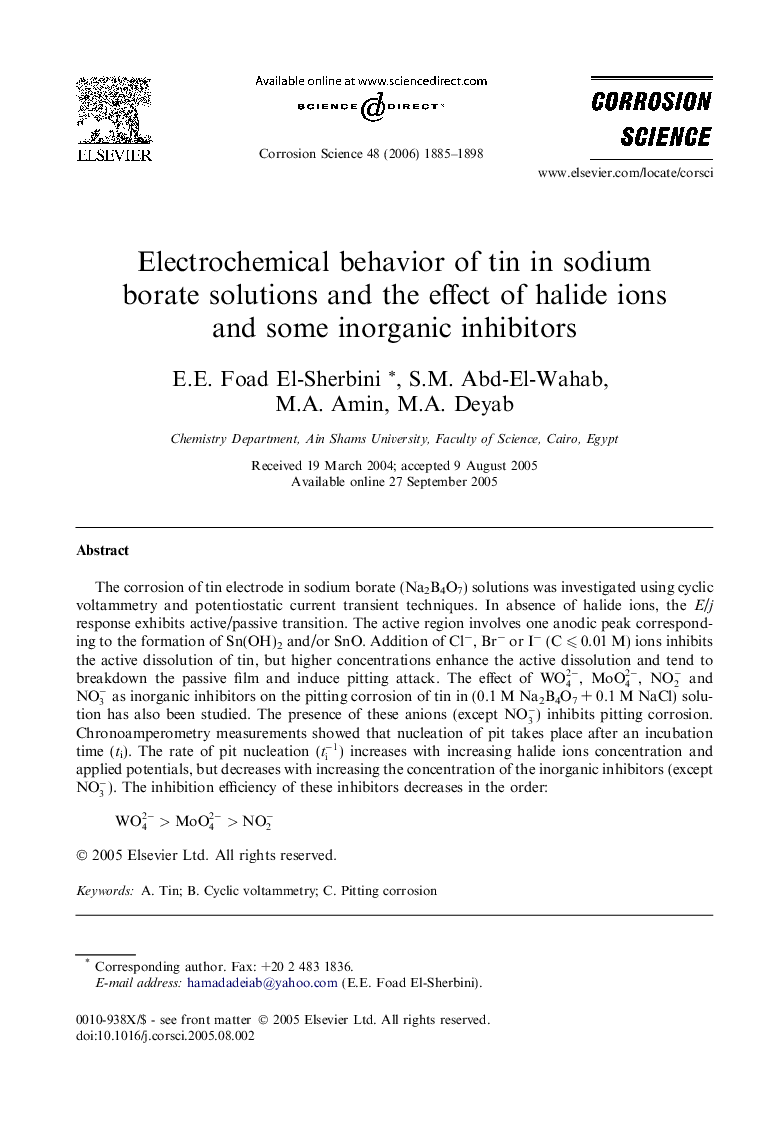| Article ID | Journal | Published Year | Pages | File Type |
|---|---|---|---|---|
| 1471682 | Corrosion Science | 2006 | 14 Pages |
The corrosion of tin electrode in sodium borate (Na2B4O7) solutions was investigated using cyclic voltammetry and potentiostatic current transient techniques. In absence of halide ions, the E/j response exhibits active/passive transition. The active region involves one anodic peak corresponding to the formation of Sn(OH)2 and/or SnO. Addition of Cl−, Br− or I− (C ⩽ 0.01 M) ions inhibits the active dissolution of tin, but higher concentrations enhance the active dissolution and tend to breakdown the passive film and induce pitting attack. The effect of WO42-, MoO42-, NO2- and NO3- as inorganic inhibitors on the pitting corrosion of tin in (0.1 M Na2B4O7 + 0.1 M NaCl) solution has also been studied. The presence of these anions (except NO3-) inhibits pitting corrosion. Chronoamperometry measurements showed that nucleation of pit takes place after an incubation time (ti). The rate of pit nucleation (ti-1) increases with increasing halide ions concentration and applied potentials, but decreases with increasing the concentration of the inorganic inhibitors (except NO3-). The inhibition efficiency of these inhibitors decreases in the order:WO42−>MoO42−>NO2−
